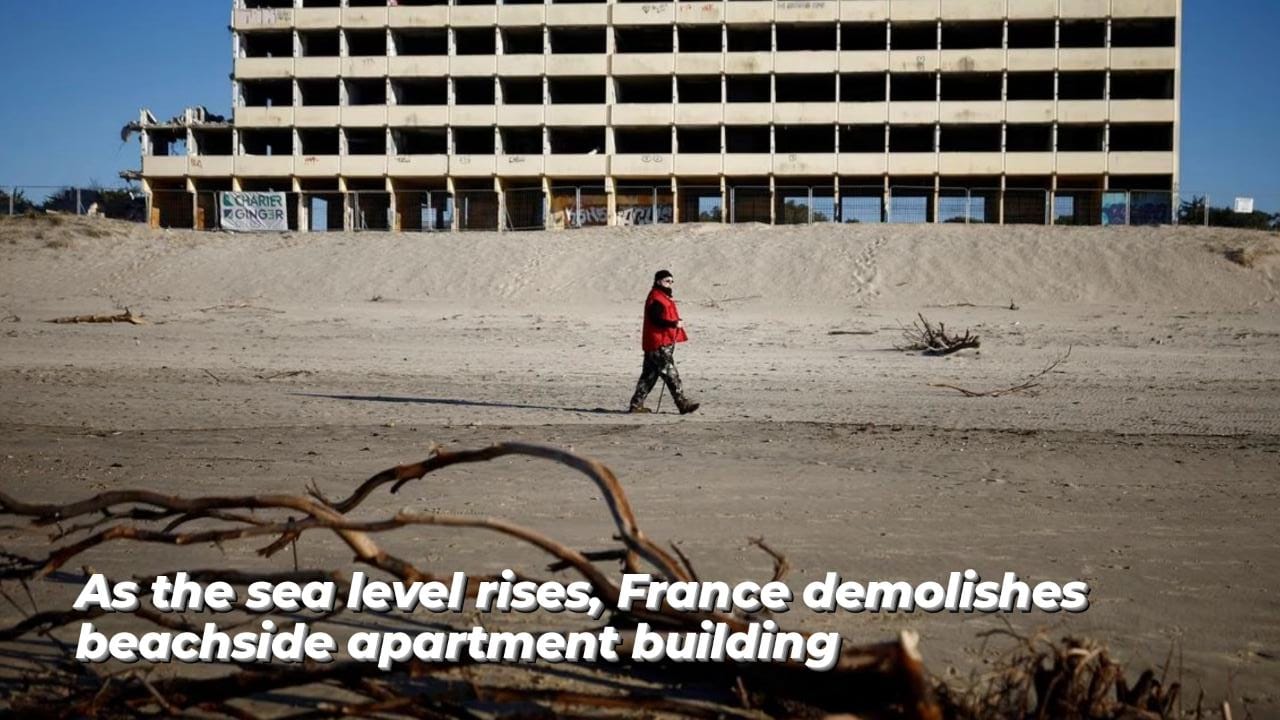
The beach was more than 200 metres (656 feet) away when it was constructed at the end of the 1960s on one of France’s most beautiful Atlantic coastlines. The 80-unit Le Signal apartment building’s hulk is currently being demolished by local authorities before it falls off a dune and into the water.
It was four stories high and aimed at tourists visiting Soulac-sur-Mer, a resort town in southwest France that is known for its expansive golden beaches and pine forests, at the northernmost point of the Gironde Estuary.
However, Soulac-sur-Mer experienced some of the fastest coastal erosion in France in the past few decades, with beaches disappearing at a rate of about 2.5 metres per year. By 2010, the dune on which Le Signal was constructed was being lapped by the sea.
Before beginning demolition earlier this month, the local government made the decision to relocate the building’s occupants in 2014 and started the protracted process of expropriation and asbestos removal.
On a bright February day, locals and tourists watched from behind a fence as an excavator tore pieces out of Le Signal’s abandoned hulk.
Guy Bouyssou, a 71-year-old local resident, claimed that the building’s demolition ‘puts a finger on a key question of our times, climate change and its impact on ocean levels.’ He also expressed concern that the village itself, which is located just north of Le Signal, may soon suffer watThe beach was more than 200 metres (656 feet) away when it was constructed at the end of the 1960s on one of France’s most beautiful Atlantic coastlines. The 80-unit Le Signal apartment building’s hulk is currently being demolished by local authorities before it falls off a dune and into the water.
It was four stories high and aimed at tourists visiting Soulac-sur-Mer, a resort town in southwest France that is known for its expansive golden beaches and pine forests, at the northernmost point of the Gironde Estuary.
However, Soulac-sur-Mer experienced some of the fastest coastal erosion in France in the past few decades, with beaches disappearing at a rate of about 2.5 metres per year. By 2010, the dune on which Le Signal was constructed was being lapped by the sea.
Before beginning demolition earlier this month, the local government made the decision to relocate the building’s occupants in 2014 and started the protracted process of expropriation and asbestos removal.
On a bright February day, locals and tourists watched from behind a fence as an excavator tore pieces out of Le Signal’s abandoned hulk.
Guy Bouyssou, a 71-year-old local resident, claimed that the building’s demolition ‘puts a finger on a key question of our times, climate change and its impact on ocean levels.’ He also expressed concern that the village itself, which is located just north of Le Signal, may soon suffer water damage.er damage.

Post Your Comments